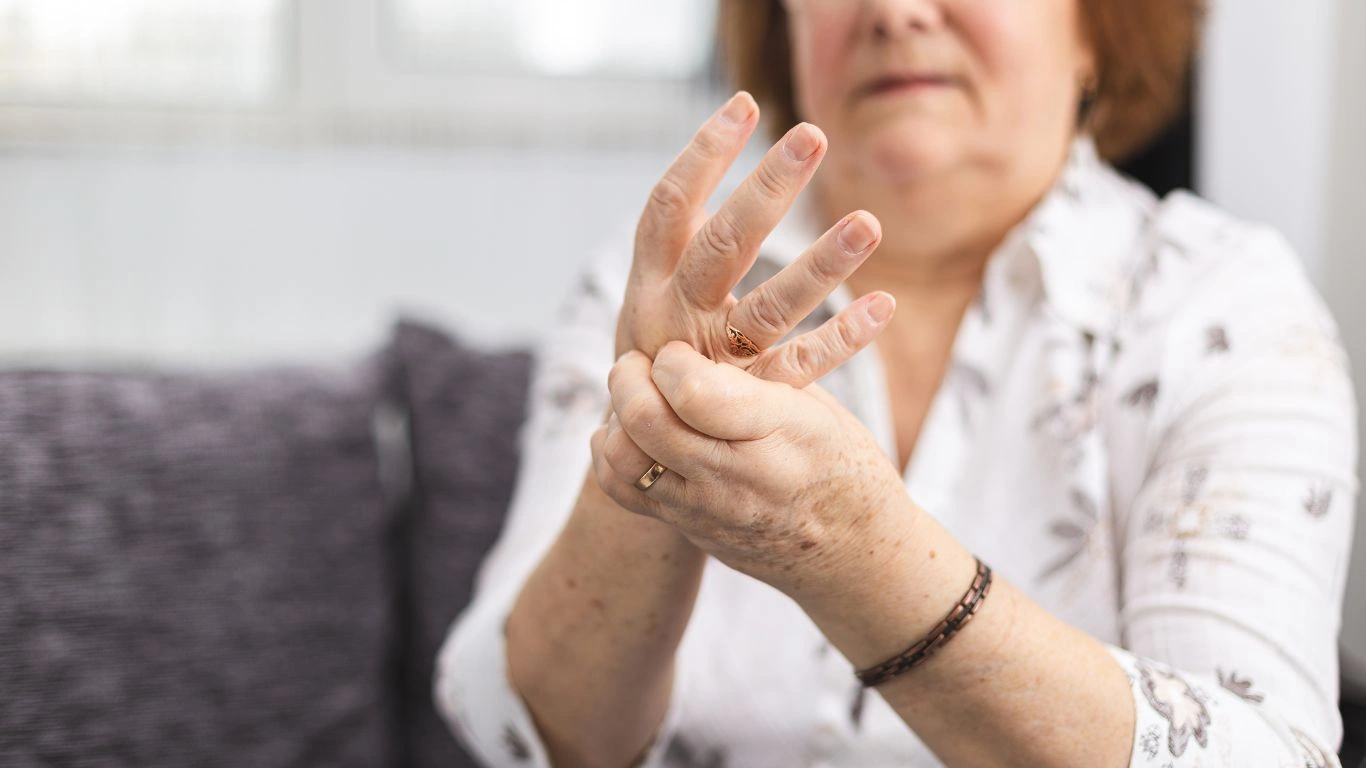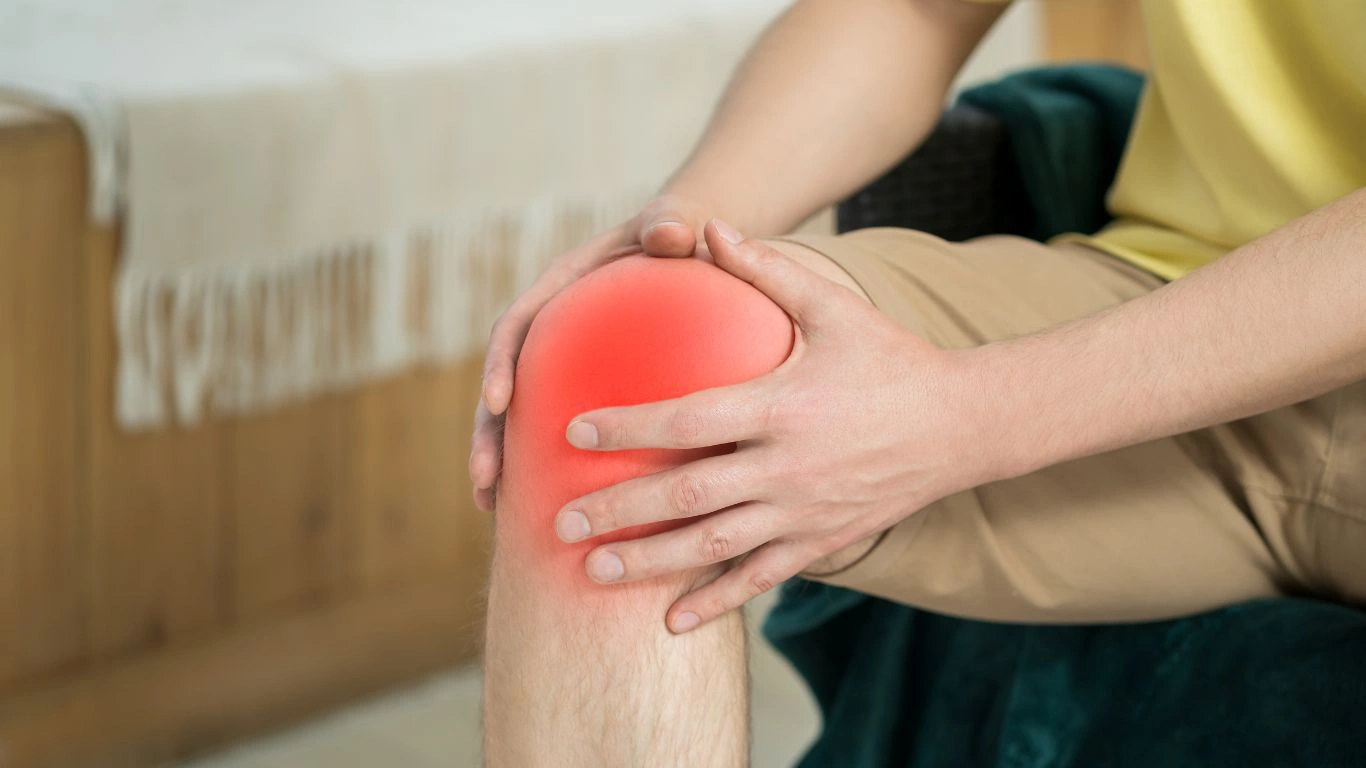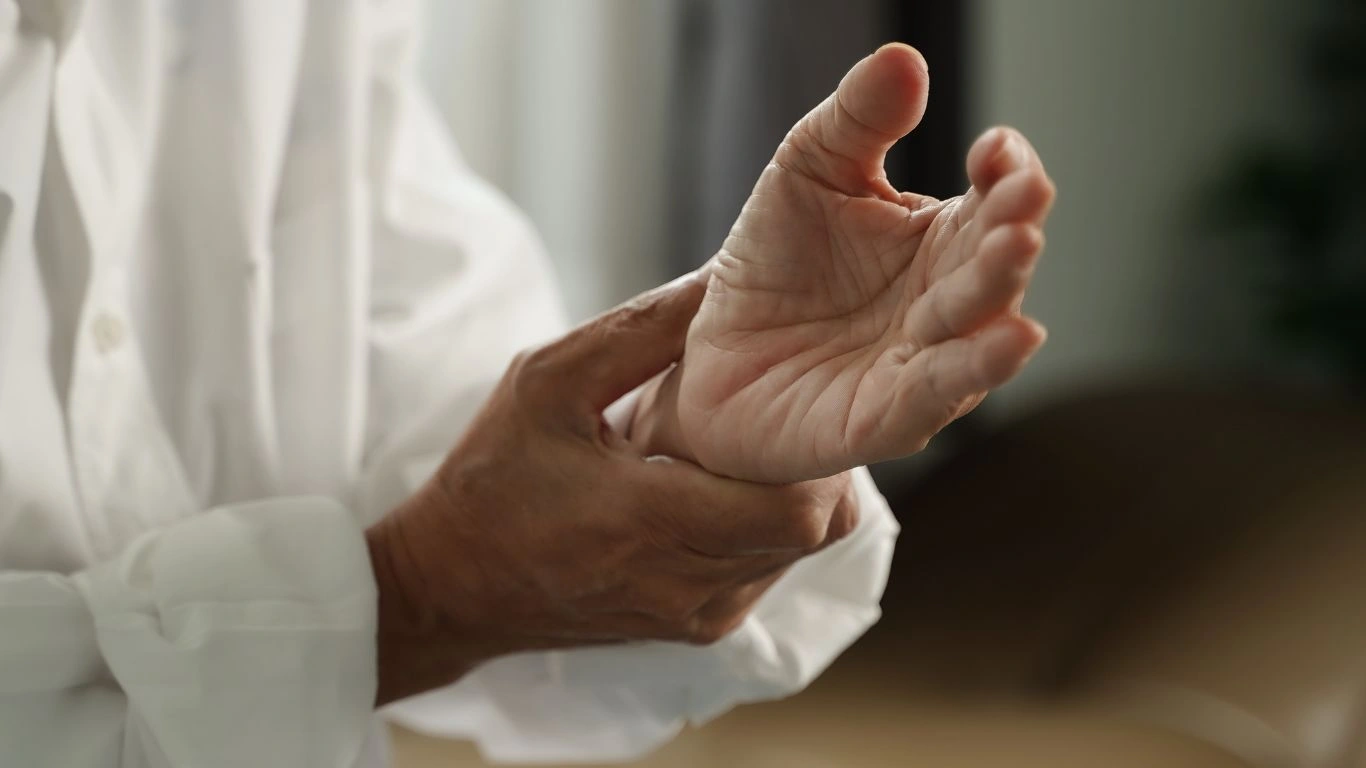Best Ways to Improve Circulation with Rheumatoid Arthritis for Relief
Living with rheumatoid arthritis (RA) can be challenging, especially when it comes to managing pain, inflammation, and mobility. As someone who has spent years as a Rheumatology Nurse Practitioner, I’ve seen firsthand how RA affects people on a daily basis. One of the most common concerns I hear from patients is about their circulation and how it’s impacted by their condition. In this post, we’re going to dive deep into rheumatoid arthritis and explore the best ways to improve circulation, helping you feel better and live more comfortably.
Understanding Rheumatoid Arthritis and Circulation Issues

Rheumatoid arthritis is an autoimmune disease that primarily affects the joints, causing pain, swelling, and stiffness. But RA doesn’t just stop at the joints—it can affect other parts of the body, including your cardiovascular system. Over time, people with RA are at a higher risk for issues like poor circulation, blood clots, and even heart disease. This is why it’s so important to focus on improving circulation to mitigate these risks.
For many of my patients, one of the toughest aspects of managing RA is dealing with the discomfort caused by poor circulation. When joints become inflamed, blood flow can be restricted, leading to stiffness and swelling. This makes it harder for blood to move freely through the body, which can affect overall health and energy levels. It’s a frustrating cycle, but there are strategies you can use to help improve circulation, even with RA.
Why Circulation Matters in Rheumatoid Arthritis
Circulation is more than just about getting blood to your heart—it’s essential for healthy joints, tissues, and organs. When blood flow is restricted, it can lead to several problems. In RA, poor circulation can exacerbate inflammation, cause muscle stiffness, and slow the healing process of damaged tissues. Additionally, people with RA may experience vasculitis, which is inflammation of the blood vessels, further complicating circulation. All of this means that improving circulation is not just about comfort—it’s a key part of managing RA effectively.
The Best Ways to Improve Circulation in RA

Improving circulation doesn’t mean you have to undergo intense workouts or fancy treatments. In fact, there are simple, everyday steps you can take to boost blood flow and reduce inflammation. Let me share a few of my tried-and-true methods that I’ve recommended to many of my patients over the years. These are practical, manageable ways to improve circulation while also helping with RA symptoms.
1. Stay Active, But Know Your Limits
One of the most effective ways to boost circulation is through regular physical activity. Now, I know that sounds like a big ask, especially when you’re dealing with joint pain. But the key is finding movement that works for you. It doesn’t need to be a high-impact workout to make a difference. Low-impact exercises like walking, swimming, or cycling can increase blood flow without putting unnecessary strain on your joints.
My personal recommendation? Start slow. Begin with short walks or gentle stretches and gradually build up as your body allows. It’s important to listen to your body. Some days will be easier than others, and that’s perfectly okay. The goal is consistent movement, not overexertion.
2. Massage Therapy to Increase Blood Flow
Massage can be a game-changer for improving circulation, especially when inflammation has caused your joints to feel tight and stiff. Gentle massage can help stimulate blood flow to affected areas, reducing muscle tension and swelling. I’ve had many patients tell me that regular massage sessions (either professional or at home) help them manage both their RA pain and circulation issues more effectively.
If you’re not ready to schedule a professional massage just yet, don’t worry—there are plenty of self-massage techniques that can be just as effective. Start with a warm bath to relax your muscles and then gently massage areas of tension with your hands. Focus on areas where you feel the most stiffness, like your hands, wrists, or knees.
3. Stay Hydrated to Support Blood Flow
You may not realize it, but staying hydrated is crucial for circulation. Dehydration can cause your blood to become thicker, making it harder for it to flow freely. This can exacerbate circulation issues and contribute to RA symptoms. I always tell my patients that water is one of the simplest and most effective ways to support healthy circulation.
In addition to water, herbal teas like ginger or turmeric can provide additional anti-inflammatory benefits. These herbs are often recommended in RA treatment because they not only support circulation but also help reduce the underlying inflammation associated with the disease.
4. Elevate Your Legs and Arms to Improve Blood Flow
When you have rheumatoid arthritis, your joints often get swollen and painful, which can make it even harder for blood to circulate properly. A simple way to encourage better circulation is to elevate your legs and arms regularly. This helps reduce swelling and allows blood to flow more easily back to your heart.
Try to elevate your legs when you’re sitting or lying down. A few pillows under your legs while you’re on the couch or in bed can make a big difference. You can do the same for your arms if you notice swelling in your hands or wrists. Elevation, along with gentle movement, can help improve circulation and ease discomfort.
Making Small Changes for Big Results

Improving circulation with rheumatoid arthritis doesn’t require a complete overhaul of your lifestyle. In fact, even small changes can yield big results over time. The key is consistency—whether that’s through gentle exercise, staying hydrated, or adding in a little self-care like massage therapy. The more you can incorporate these practices into your daily routine, the better you’ll feel in the long run.
Of course, it’s always a good idea to consult with your healthcare provider before making any major changes to your routine, especially if you have specific concerns about your RA treatment. But with a few simple adjustments, you can start seeing improvements in your circulation and overall well-being. And remember—managing rheumatoid arthritis is a journey. Take it one step at a time, and be kind to yourself along the way.
Diet and Nutrition: The Impact on Circulation and RA

As a Rheumatology Nurse Practitioner, I can’t stress enough how much diet plays a role in improving circulation and managing rheumatoid arthritis. What you eat can either exacerbate inflammation and circulation problems or help alleviate them. While there isn’t a one-size-fits-all solution when it comes to diet, there are some key nutrients and foods that can support better circulation and ease RA symptoms.
When it comes to foods, I always tell my patients to focus on anti-inflammatory options. Foods rich in omega-3 fatty acids, antioxidants, and fiber are great for improving circulation and reducing inflammation. For example, fatty fish like salmon and mackerel, nuts and seeds, and flaxseed are packed with omega-3s, which are well-known for their anti-inflammatory effects. The more you can incorporate these kinds of foods into your diet, the better.
1. Omega-3 Fatty Acids: Your Circulation’s Best Friend
Omega-3 fatty acids have been shown to reduce inflammation, a major concern in rheumatoid arthritis. By incorporating more omega-3s into your diet, you can potentially lower the inflammation that affects your circulation. These fatty acids are also great for heart health, which is a significant concern for people with RA due to the increased risk of cardiovascular disease. Fish like salmon, sardines, and trout are excellent sources of omega-3s, but you can also find them in plant-based options like chia seeds, walnuts, and flaxseeds.
In my experience, many of my patients have noticed a reduction in joint pain and stiffness when they make a concerted effort to include omega-3-rich foods in their meals. If you’re not a fan of fish, supplements can also help you get the benefits of omega-3s without having to eat them daily. However, I always recommend getting your nutrients from whole foods whenever possible.
2. Antioxidants for Reducing Inflammation
Antioxidants are another critical piece of the puzzle when it comes to improving circulation and reducing inflammation in RA. These powerful compounds help fight oxidative stress, which is one of the contributors to inflammation. Fruits and vegetables, especially brightly colored ones like berries, leafy greens, and citrus fruits, are packed with antioxidants that can help keep your blood vessels healthy and improve circulation.
I’m always amazed by the difference a well-balanced, antioxidant-rich diet can make. Not only does it help reduce the inflammation that limits circulation, but it also supports overall health, keeping your immune system strong. Adding these foods to your daily routine is a simple yet effective way to improve circulation and support your RA management.
Supplements for Supporting Circulation in RA

In addition to diet, some supplements can also support circulation and help manage rheumatoid arthritis symptoms. While supplements aren’t a replacement for a healthy diet or proper medication, they can serve as a helpful addition to your routine. I’ve recommended several supplements to my patients that have shown positive effects on circulation and overall RA management.
1. Turmeric (Curcumin)
Turmeric, specifically the compound curcumin, is widely known for its anti-inflammatory properties. It’s one of the most commonly recommended supplements for RA patients because it helps reduce joint inflammation and pain. Turmeric can also improve circulation by supporting blood flow and reducing the risk of blood clots, which is a concern for many people with RA. In my practice, I’ve seen patients benefit from adding turmeric to their supplement regimen, either through capsules or by incorporating it into their meals.
Just a quick tip: curcumin is best absorbed with black pepper, so look for supplements that combine both, or add a pinch of pepper to your turmeric-based dishes for the best effect.
2. Ginger
Ginger is another supplement with strong anti-inflammatory effects. It helps reduce pain, swelling, and stiffness in joints while promoting circulation. Ginger also has blood-thinning properties, which can enhance circulation and reduce the risk of clotting. It’s an excellent addition to your diet, whether in its fresh form, as tea, or in supplement form. Many patients I’ve worked with have reported feeling more flexible and experiencing less swelling when they incorporate ginger regularly.
3. Vitamin D
Vitamin D is crucial for overall health, but it’s particularly important for those with rheumatoid arthritis. Deficiency in vitamin D is common in RA patients, and studies have shown that low levels of vitamin D can worsen RA symptoms and impact circulation. Supplementing with vitamin D can help maintain bone health, improve muscle function, and support better circulation. If you’re not sure about your vitamin D levels, it’s worth discussing with your doctor to see if supplementation is necessary.
Stress Management: Reducing Its Impact on Circulation and RA

We often overlook stress as a factor in RA management, but in reality, stress has a huge impact on circulation and inflammation. When you’re stressed, your body releases hormones like cortisol, which can increase inflammation and reduce blood flow. Over time, chronic stress can make RA symptoms worse and negatively affect circulation.
1. Deep Breathing and Meditation
As someone who’s seen the benefits firsthand, I highly recommend practicing relaxation techniques like deep breathing or meditation to help manage stress. These methods can help calm your nervous system, reduce inflammation, and improve circulation. A few minutes of deep breathing a day can help you feel more centered and less anxious, which will have a positive impact on both your mental and physical health.
2. Yoga and Mindfulness
Yoga is another wonderful way to reduce stress while improving circulation. It gently stretches your muscles, increases blood flow, and encourages relaxation. Many of my patients find that incorporating yoga into their routine helps not only with flexibility but also with their overall sense of well-being. Mindfulness, too, can be an excellent tool to manage stress. Simply focusing on the present moment can help you cope with the mental challenges that come with RA and improve your circulation in the process.
Stress management isn’t just about mental health—it’s a key part of managing RA and improving circulation. The more you can find ways to relax and de-stress, the better you’ll feel overall.
Getting Enough Rest to Improve Circulation and Manage RA

When you have rheumatoid arthritis (RA), getting adequate rest is just as important as staying active. I know it might seem counterintuitive—especially when you’re feeling stiff or in pain—but rest is a critical component of managing both your RA symptoms and circulation. It’s all about balance: too much activity can strain your joints, but too little can leave your blood flow stagnant and contribute to muscle stiffness.
When your body is at rest, it can focus on repairing tissues, reducing inflammation, and promoting blood flow. Getting good-quality sleep and allowing time for rest during the day can significantly improve how your body circulates blood and manages pain. Over the years, I’ve found that many of my patients who prioritize proper rest have less swelling and feel more energized during the day. That said, there’s a balance—taking the time to listen to your body and knowing when to rest and when to move is crucial.
1. The Importance of Sleep
Sleep is essential for your body to heal. If you’re not sleeping well, you may notice more stiffness in the morning and feel more fatigued throughout the day. The body repairs itself during sleep, and that includes managing inflammation and improving circulation. I’ve had patients tell me that they notice a huge difference in their RA symptoms after they’ve improved their sleep habits.
Here are a few tips to improve your sleep quality:
- Stick to a regular sleep schedule—go to bed and wake up at the same time every day.
- Create a calming bedtime routine—try reading a book or doing some gentle stretches before bed.
- Keep your bedroom cool, dark, and quiet for better sleep quality.
- Avoid caffeine or heavy meals before bedtime.
2. Resting During the Day
It’s important to incorporate rest periods into your daily routine. Even if you’re staying active and moving your joints, taking short breaks throughout the day can help improve circulation and prevent fatigue. These rest periods give your body time to recover and keep your blood flowing, which in turn helps with inflammation and mobility.
Try to take a 15-minute break every couple of hours, especially if you’re working at a desk or doing any repetitive tasks. During these breaks, stretch gently or even take a short walk to keep the blood circulating. It’s about finding that rhythm that works for you: moving just enough to keep things loose but resting enough to let your body heal.
Physical Therapies and Professional Support for RA

For those of us living with rheumatoid arthritis, it’s not just about home remedies and lifestyle changes—professional support can make a world of difference. Physical therapists, occupational therapists, and other healthcare providers specialize in helping RA patients improve circulation, joint mobility, and overall function. Working with these professionals can speed up your recovery and provide personalized strategies tailored to your unique needs.
1. Physical Therapy for RA
Physical therapy is one of the most effective treatments for improving joint mobility, strength, and circulation in people with rheumatoid arthritis. A physical therapist will work with you to develop a plan that strengthens the muscles surrounding your joints, helping them move more freely and support better blood flow. The exercises may include stretches, resistance training, and low-impact aerobic activities—all designed to promote healthy circulation without causing added strain on your joints.
In my experience, patients who commit to physical therapy often experience less pain, reduced stiffness, and improved circulation. It’s an investment in your long-term health and mobility, and it can give you the confidence to live life more fully, despite RA.
2. Occupational Therapy for Joint Protection
Occupational therapists focus on helping individuals manage their daily activities while minimizing strain on their joints. They may teach you techniques for safer movement, recommend assistive devices, or suggest modifications to your environment. The goal is to help you improve function, reduce pain, and avoid damaging your joints, all of which contribute to better circulation.
Some simple examples of what an occupational therapist might suggest are:
- Using tools that reduce strain on your hands or wrists (like jar openers or ergonomic kitchen tools).
- Learning better posture and body mechanics to prevent stress on your joints.
- Adapting your workspace or living environment to make it more comfortable.
References and Resources
There are many credible sources that offer valuable information on rheumatoid arthritis and circulation. A few trusted places to turn to for more research and information include:
These organizations provide a wealth of information on RA, circulation, treatment options, and much more. They are excellent resources for staying up-to-date on the latest research and evidence-based practices for managing rheumatoid arthritis and improving circulation.
Disclaimer
The information in this article is intended for general informational purposes only and should not be considered as medical advice. Always consult with your healthcare provider before making any changes to your diet, exercise, or medication regimen, especially if you have specific health concerns. The suggestions provided here are based on general principles that may help manage rheumatoid arthritis and improve circulation, but each individual’s condition is unique, and professional guidance is essential for the best results.

Tarra Nugroho is a dedicated Nurse Practitioner with a strong foundation in family and preventive care. She brings both compassion and clinical expertise to her practice, focusing on patient-centered care and health education. As a contributor to Healthusias.com, Tarra translates medical knowledge into clear, empowering articles on topics like women’s health, chronic disease management, and lifestyle medicine. Her mission is simple: help people feel seen, heard, and informed—both in the clinic and through the content she creates. When she’s not caring for patients, Tarra enjoys weekend hikes, plant-based cooking, and curling up with a good health podcast.





